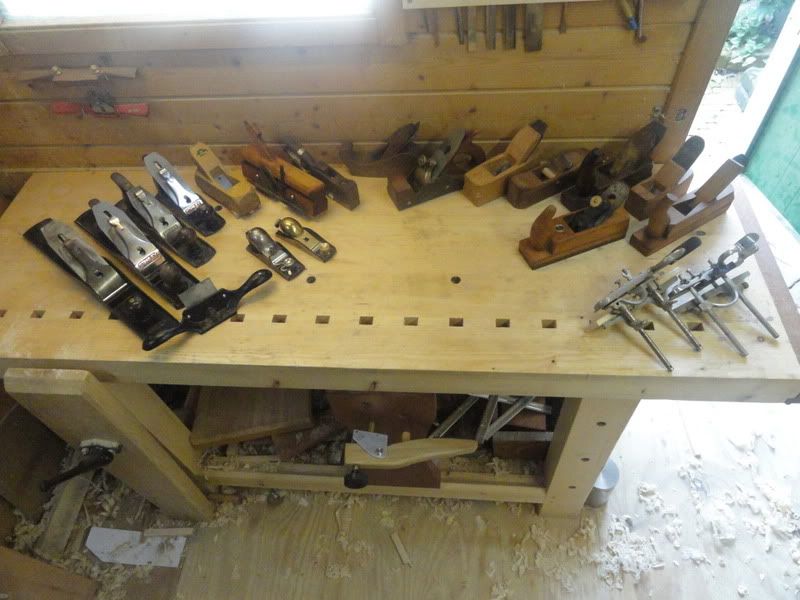I'm finishing my Roubo, I've been using it very satisfactorily as a big clamping surface without the leg vise, dead-man or crochet Hook for some time. Kind of tired of manhandling big clamps so, I'm finally taking some time to complete it.
I've got the leg vise finished, and am applying some wiping varnish to it. The dead-man is in production and I'm considering adding a "Scab" to the back of it so the area by the holes is 3" thick instead of 1.5" thick. This would give a hole 3" deep for a hold-fast. I appreciate opinions on whether this is a good idea or one better left alone.
Also, I've glued up a board for the crochet hook, but am having second thoughts about it, I'm afraid it would just be a protrusion getting in the way of easily walking around and working on the bench. For guys with Crochet Hooks, any comments on the usefulness of it.
My bench his 9' by 2' and made out of construction fir. The dead-man and leg Vise are made out of some utility grade White Oak I have laying around. The crochet hook will be fir if I add it.




 Reply With Quote
Reply With Quote






